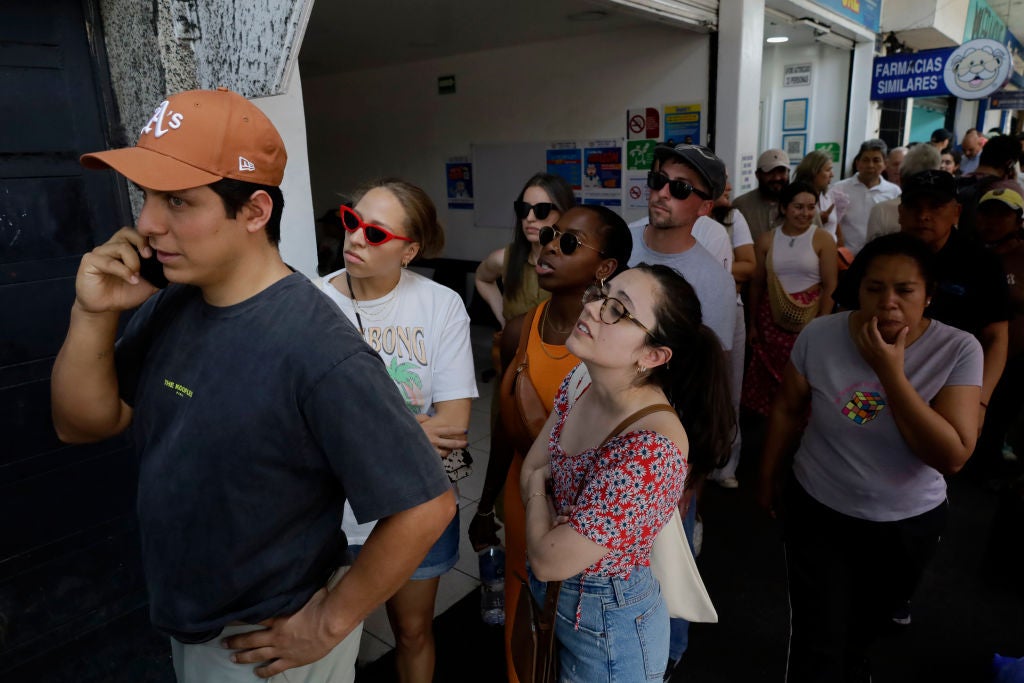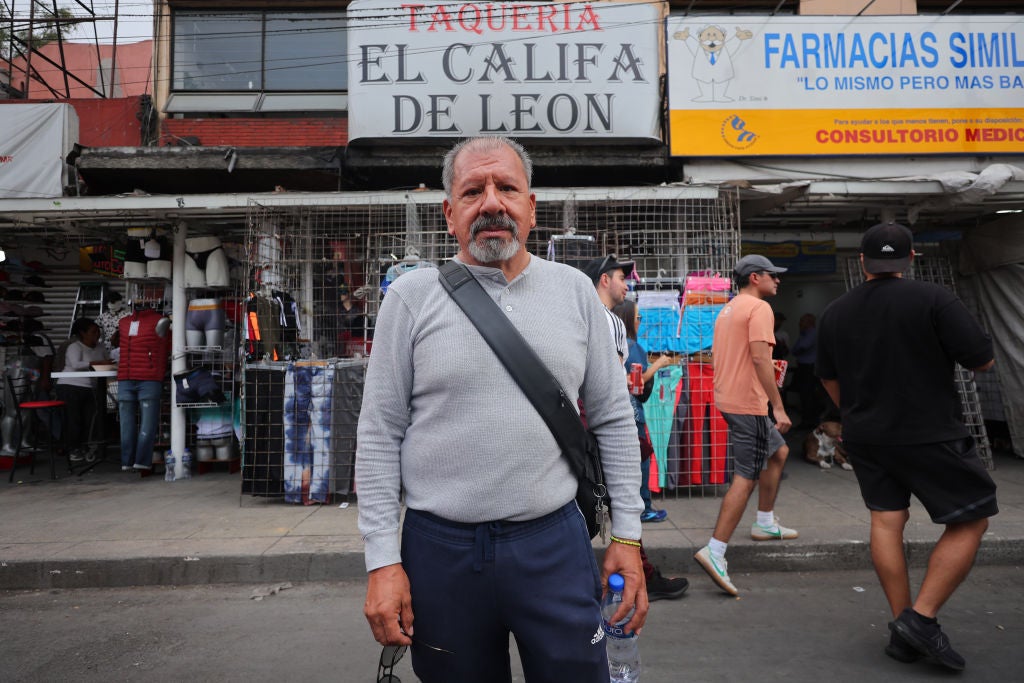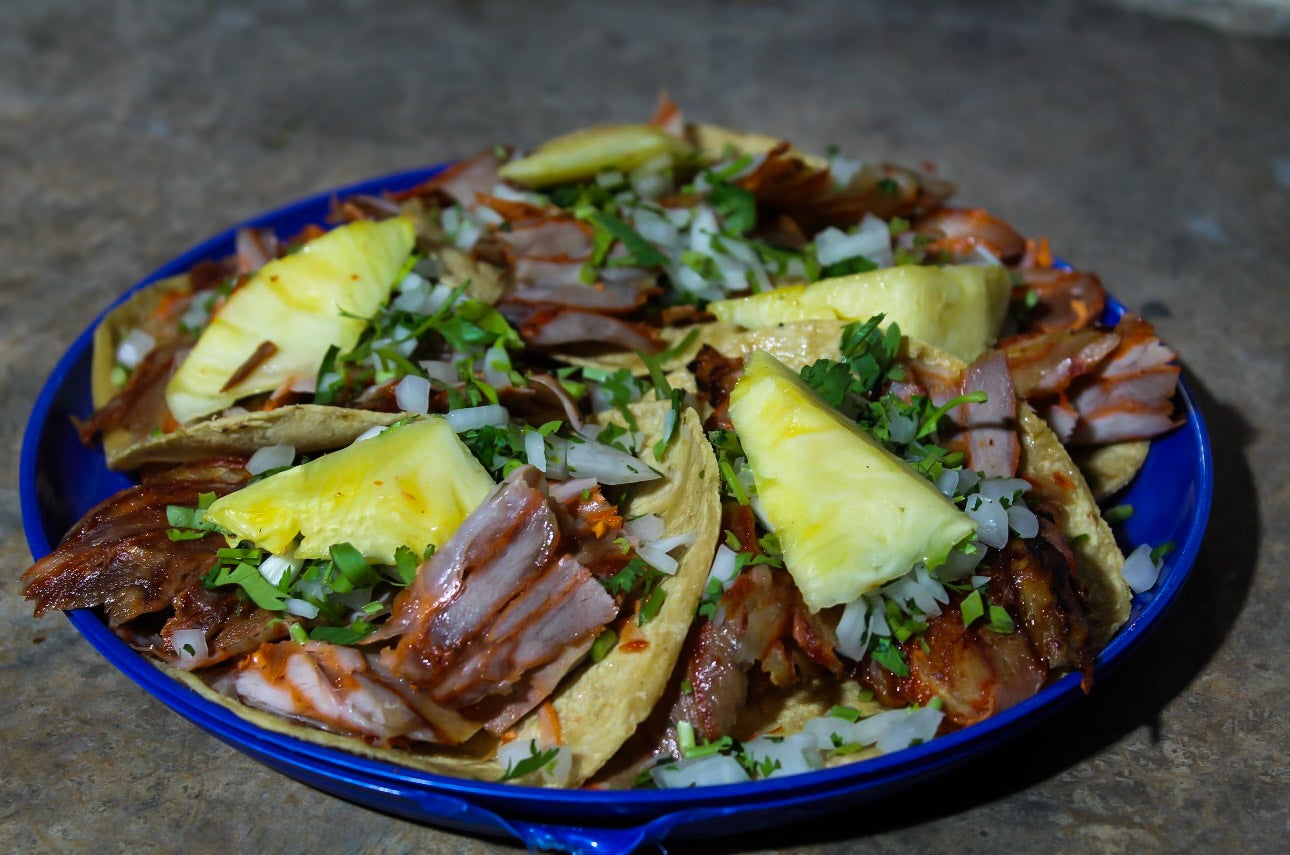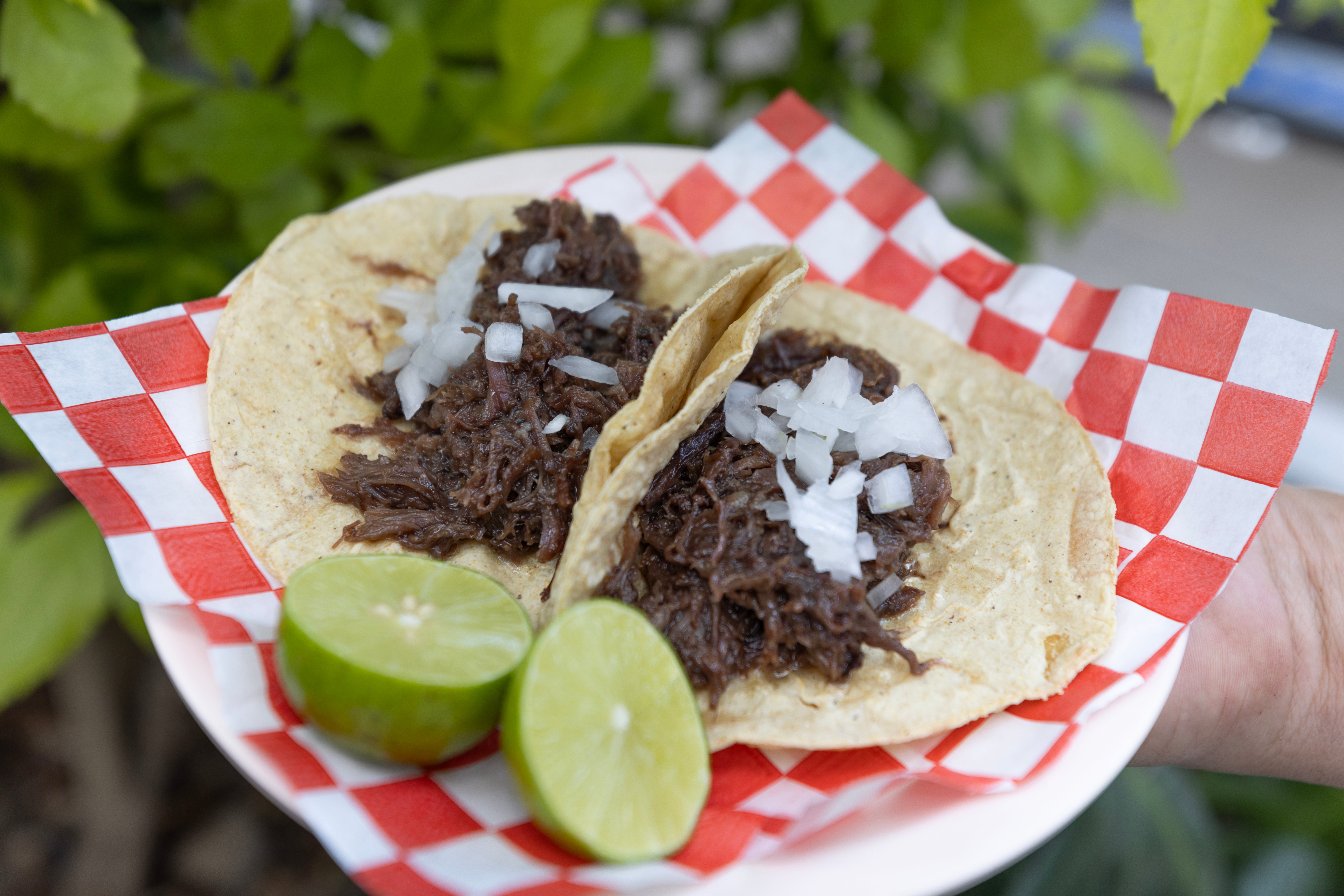
Your support helps us to tell the story
Our mission is to deliver unbiased, fact-based reporting that holds power to account and exposes the truth.
Whether $5 or $50, every contribution counts.
Support us to deliver journalism without an agenda.

Louise Thomas
Editor
No other food is as synonymous with Mexican cuisine as the humble taco. Consumed by all Mexicans regardless of social status, tacos can be found throughout the country and vary significantly by region. In the country’s capital, taco stands dominate the streetscape, with the smell of fried and roasted pork and grilled beef an integral element of daily life. Whether it’s eaten in a trio during a lunch break or washed down with an icy beer after a night out, a taco is always a good idea.
It’s important to understand that tortillas are to Mexicans what bread is to Europeans. Be it breakfast, lunch or dinner, most Mexican families have a hefty stack of tortillas on the table, kept warm in a tortillero – a tortilla holder – which is accessed regularly and enthusiastically to wrap stews or meat. Much like a sandwich, the fillings in a taco are endless. Even elaborate Mexican dishes like mole sauce – an earthy, richly-layered concoction made with chilli peppers, spices and often chocolate – and cochinita pibil – slow-roasted pork marinated in citrus juice and achiote (annatto seeds) – can be tucked inside a tortilla and considered a taco.
As a Mexico City native who often writes about food, I’d been eagerly awaiting the arrival of the Michelin Guide in Mexico. We’re a proud people and can’t stop talking about our cuisine and the restaurants that regularly appear on the World’s 50 Best list – mainly Pujol and Quintonil. Last May, the wait ended and the stars were unveiled. Much to everyone’s surprise, a tiny, relatively unknown taquería was awarded a star. Although this was the first time the Michelin Guide rated restaurants in Mexico, there are certain expectations associated with dining at a Michelin-starred restaurant, and local foodies weren’t expecting one to be awarded to a taco stand. Suddenly, the modest, unpretentious taco had become Michelin-worthy – and a Michelin-starred experience was accessible to everyone.

The taquería that made headlines after it was crowned with a Michelin star is El Califa de León, a 10-foot by 10-foot taco shop tucked behind a row of street stalls selling colourful clothing items in the working-class San Rafael neighbourhood. The world’s only taco stand boasting a star awoke to instant fame and three-hour queues following the announcement on 14 May, as Mexico City natives, tourists and journalists waited eagerly to sample its four types of carne asada (grilled steak) tacos: the only thing on the menu.
Read more: How Mexico City’s foodie scene got a serious upgrade
What’s special about El Califa de León is the quality of the meat. The taquería, opened in 1968 by Juan Hernández, is now managed by his son, Mario Hernández, who co-owns and has led the establishment for the past 36 years. “We have been in the market for 56 years,” he tells me. “I learned the trade from my father, who worked with meat his entire life. He was an artist in this field, mastering a very special cut, which we still use today.” The special cut Hernández is referring to is the gaonera, a thinly-sliced tenderloin taco that’s the star of this no-frills taco stand. The second ingredient that sets El Califa de León’s tacos apart from the competition is its homemade tortillas, made on the spot as the meat cooks on the sizzling grill.
With prices ranging from £2.50 to £4, the tacos are expensive by Mexican standards, but according to a devout clientele, entirely worth it. “I was there recently and the price hasn't increased since it got the star; it's still below 100 pesos (£3.85), unlike posher taquerías that are no match to them,” says Luis Eduardo Maya, a lawyer and journalist specialising in bullfighting who’s been a regular for decades. “It remains an affordable taco, no matter what anyone says.”

In addition to El Califa de León, eleven other taquerías made it into the Michelin Guide, albeit without a star. While visitors and Mexico City natives alike are only just discovering some of them, others have been around for decades, having been passed down from one generation to the next.
Famed for its tacos al pastor, spit-grilled slices of marinated pork with Lebanese origins that have become a Mexico City staple, El Vilsito has been around for almost four decades. “El Vilsito opened as an accessory to the auto repair shop next door”, explains Juan Carlos Blanco, one of the founders. “I used to maintain cars and decided to open a small place to sell tacos al pastor while people waited for their cars. I was only 28-years-old, a young man with many dreams and a desire to start a business.” This taquería in the Narvarte neighbourhood is known for “the quality and flavour of our pastor”, says Blanco. This simple pastor taco costs 23 pesos [88p].
Read more: The best Mexico holiday destinations – and when to travel to each one

Opened in 1968 by Don Gus with just a handful of stews, Tacos Hola El Güero is a taquería in the beloved Condesa neighbourhood that now offers more than 27 variations, all made fresh daily. Over the years, two of the owner’s sons joined the business and began adding vegetarian dishes. “Our specialty is liver and onions, which got us featured on Netflix [the documentary series Taco Chronicles], but the truth is all our tacos are great, and customers have their favourites,” explains Cristian M, one of the sons who took over as manager when his father retired. “What sets us apart is our diverse menu, which allows large groups to dine together and enjoy different dishes. I've seen friends come in where some are vegan and others are meat lovers, and both can eat without having to compromise,” he adds. At 28 pesos [£1.07], prices are the same for all tacos.
Also serving some 20 to 25 different tacos de guisado is Taquería El Jarocho, opened in 1944 by Manuel Aquino, known as El Jarocho, in the now-gentrified Roma Norte neighbourhood. “Our best-selling item is definitely the campechano, our star taco,” says Natalia Aquino, current manager and the founder’s granddaughter. “It's a mix of steak and pressed pork cracklings which we fry to perfection until very crunchy. It sells for 60 pesos [£2.30], is generously portioned, and comes with a double tortilla.”
Read more: How to spend a day in Condesa, Mexico City’s on-trend neighbourhood
While traditional taquerías abound, newcomers made their way into the Michelin Guide too. One example is Barbacoa Gonzalitos, whose founders started making small batches of barbacoa (slow-cooked beef) hailing from northern Mexico to sell among friends and acquaintances via an Instagram account. “We started in 2020, during the pandemic when jobs disappeared, and we needed a way to survive, so we began making barbacoa in one of our apartments”, explains Andrés Lerma Rubio, one of the founders. They set up in their current Roma Norte location in August 2023 and their “prices vary only by the type of tortilla: flour tortillas, which are a special raw tortilla from Monterrey cooked on the comal [flat griddle], are 42 pesos [£1.60], while corn tortillas are 40 pesos [£1.54]”, he adds.

Since becoming a food and travel writer some seven years ago, I’ve witnessed how Mexico City’s popularity has grown among travellers. The city's affordable and diverse food scene is undoubtedly one of its biggest draws. El Califa de León’s tacos are a testament to the excellent street food in Mexico City – as are all the taquerías mentioned here. Each one contributes to the rich tapestry of culinary experiences in the capital.
But one point to note: whether it's a simple pastor or an elaborate guisado, tacos are always meant to be enjoyed with salsa – even if the Michelin Guide suggests they’re good enough to go without.
Read more: All aboard the new train route exploring Mexico’s Mayan heartlands







